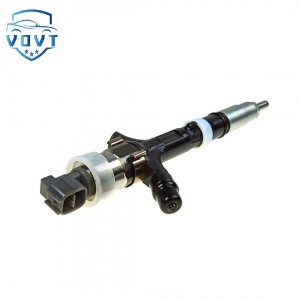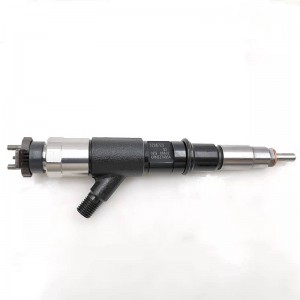High Quality Diesel Fuel Injector 095000-6810 Auto Parts
Products Description
| Reference. Codes | 095000-6810 |
| Application | / |
| MOQ | 4PCS |
| Certification | ISO9001 |
| Place of Origin | China |
| Packaging | Neutral packing |
| Quality Control | 100% tested before shipment |
| Lead time | 7~10 working days |
| Payment | T/T, L/C, Paypal, Western Union, MoneyGram or as your requirement |
Collaborative Control Model Between Fuel Injectors and Engine ECUs and Its Real-Time Validation
The performance of modern diesel and gasoline engines increasingly depends on the precise coordination between the fuel injector and the engine’s electronic control unit (ECU). As injection strategies become more complex—incorporating pre-injection, main injection, post-injection, and real-time adjustments based on load—the need for a robust collaborative control model becomes critical. To achieve fast response, stable injection quantity, and optimal combustion, the injector and ECU must function as an integrated system rather than two isolated components. This study analyzes the construction of such a collaborative control model and presents methods for validating its real-time performance.
The collaborative control model is built upon electromechanical coupling, hydraulic dynamics, and control algorithm coordination. On the injector side, the electromagnetic or piezoelectric actuator determines needle lift, opening speed, and closing precision. These dynamic characteristics are represented through a high-fidelity nonlinear model, incorporating armature motion, electromagnetic field strength, fuel pressure forces, needle dynamics, and hydraulic delay. On the ECU side, injection commands are generated according to operating conditions such as engine load, rail pressure, speed, and temperature. These commands must be converted into precise actuator drive signals with minimal latency.
A key part of the collaborative model is the closed-loop feedback mechanism. Rail pressure sensors, crankshaft sensors, and temperature sensors supply real-time data to the ECU. The ECU then refines injection timing, duration, and energizing current to maintain stable combustion. The model must account for two types of delays:
-
Computation delay within the ECU caused by algorithm execution and scheduling.
-
Physical delay in injector actuation, such as electromagnetic response and needle lift hysteresis.
To ensure consistent engine behavior, these delays are compensated through predictive control, adaptive mapping tables, and online parameter correction. The collaborative control model thus evolves into a dynamic system capable of learning from real-time operating conditions.
Real-time validation is performed through hardware-in-the-loop (HIL) testing, which simulates engine conditions while allowing the ECU and injectors to run with real drive signals. This method evaluates whether the control loop meets strict timing constraints, typically in the range of microseconds to a few milliseconds. Parameters assessed during validation include injector energizing latency, ECU command cycle time, synchronization accuracy between cylinders, and response to sudden changes in rail pressure.
Additional verification is carried out using rapid prototyping controllers, enabling researchers to modify control laws and observe their real-time impact on injection performance. The objective is to confirm that coordinated control can maintain stable fuel delivery even when confronted with disturbances such as sensor noise, pressure fluctuations, or component aging.
Results from real-time validation typically show that a well-designed collaborative control model significantly improves injection precision, reduces cycle-to-cycle variability, and enhances combustion efficiency. Furthermore, it enables advanced injection patterns—such as micro-pilot injection and multi-stage post-injection—without compromising ECU timing constraints.
In conclusion, the development of a collaborative injector–ECU control model, combined with rigorous real-time validation, is essential for achieving high efficiency, low emissions, and fast transient response in modern engines. This approach provides a foundation for next-generation intelligent injection systems and future hybrid engine control strategies.





















